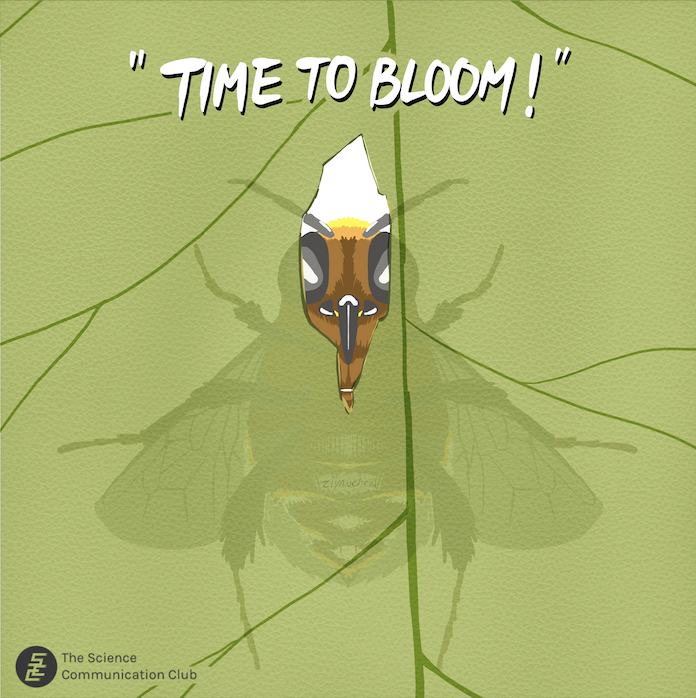
Written by Trisha Mahtani
Illustrated by Ziyan Chen
Bees help pollinate flowers and in turn rely on them for nectar and pollen as a food source. This relationship between bees and flowering plants is ideal when they’re both in sync with each other and get to reap the benefits. However, due to recent changes in the climate, bee colonies tend to emerge before flowers bloom in early spring. To overcome this, bees actually bite plant foliage to cause damage and accelerate blooming of flowers by up to 30 days earlier!
Researchers from ETH Zurich found that pollen deprived bees would quickly damage plant leaves by making holes without actually eating them. The leaf cuttings would be left behind in cups that the group collected. The bees would use their proboscis (a “tongue” to draw out liquids) and mandibles (for chewing and stabilizing the proboscis) to inflict the damage. It’s been seen that stress can lead to earlier flowering and bees take advantage of this to induce some plants to flower early (by up to 30 days in advance)! Interestingly, this was much faster than in plants that were damaged mechanically by the research group. Mechanical damage did also accelerate flowering compared to no damage, but not at the same rate as the bee-inflicted damage. This suggests that bee saliva plays a role at the site of damage to induce rapid flowering, perhaps due to a specific compound.
They also found that pollen influences whether bees damage plant leaves, as providing pollen around plants with no flowers or having more flowering plants were enough to reduce damage. However, when flowering plants were placed further away and plants with no flowers were kept closer to the colony, there was no reduction in damage to the plants close to the colony. From this, they concluded that bees require flowering plants to be in close proximity to them and will preferentially try to accelerate their flowering rather than look further for flowers.
Even though their study mostly focused on bees that are used for commercial honey production, they observed two wild species of bees with the same behaviour! Multiple species of bees are harnessing this tactic to speed up flowering. The bees get their food source early enough to survive, and once flowering is abundant, they no longer inflict damage to the plants while helping to pollinate them. This study highlights how bees are adapting and surviving during climate change, as their earlier emergence requires new behaviours to promote food abundance.
Sources:
- Pashalidou, F. G., Lambert, H., Peybernes, T., Mescher, M. C., & De Moraes, C. M. (2020). Bumble bees damage plant leaves and accelerate flower production when pollen is scarce. Science, 368(6493), 881-884.
- https://www.scientificamerican.com/article/bumblebees-bite-plants-to-force-them-to-flower-seriously/
- https://www.sciencedaily.com/releases/2020/05/200526134651.htm